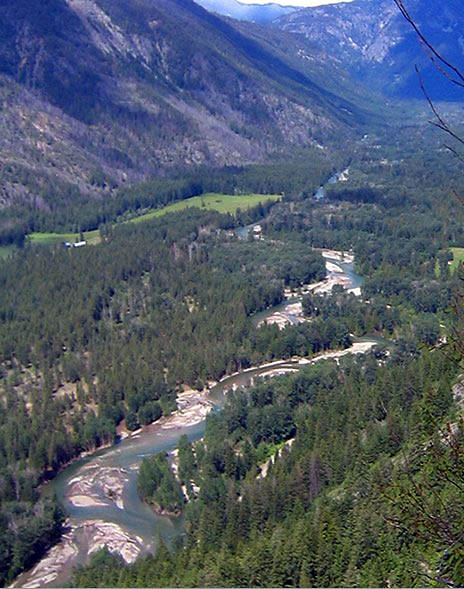home | internet service | web design | business directory | bulletin board | advertise | events calendar | contact | weather | cams

|
Study Reveals
Possible Future Water Shortages
The draft evaluation also found that if all existing parcels were subdivided and developed to the limits allowed by current zoning, 127 homes in the upper Methow and more than 24,000 homes in the lower Methow would be outside the water-use limits. Right now, according to the study, no part of the Methow River Valley is using more domestic and stock water from the river than is allowed under the law. The legal limit for water use was set in 1976 by the ‘Instream Flow Rule for the Methow River’—Chapter 173-548 of the Washington Administrative Code. It allows for two cubic feet per second to be taken from the river for single domestic and stock water uses in each of seven stream management reaches:
The Methow Watershed Council hired Aspect Consulting to find out if residents in the Methow Valley Watershed were living inside water use law, and to make estimates about the future. “Under current conditions, all the reaches have water remaining . . . The minimum remaining (water) reservation is the Lower Methow reach, which has allocated slightly more than half of the original reservation,” states the draft evaluation. The study estimated water use associated with a typical residence served by a permit-exempt well (water right not required). A land parcel that is subdivided and developed with more than six residential lots likely would require a water right from the Washington State Department of Ecology. In the unlikely scenario of full allowable subdivision and buildout there would be 32,000 residences in the Methow Valley, 80 percent of them in the lower Methow due to the "relatively small minimum parcel size allowable under existing zoning" in that reach. In the more realistic scenario of buildout on land parcels as they now exist (not further divided), the existing water reservations are enough for all but the Lower Methow reach. The full draft evaluation is available on the Methow Watershed Council website: www.methowwatershed.com The Aspect
Consulting website is: www.aspectconsulting.com |
 The Methow Watershed Council
paid for an evaluation of river-water use in the Methow
Valley and learned this: if homes were built on all existing
land parcels in the Methow River drainage, nearly 1,100
homes in the lower Methow would need a source of water
other than what is now legally available.
The Methow Watershed Council
paid for an evaluation of river-water use in the Methow
Valley and learned this: if homes were built on all existing
land parcels in the Methow River drainage, nearly 1,100
homes in the lower Methow would need a source of water
other than what is now legally available.